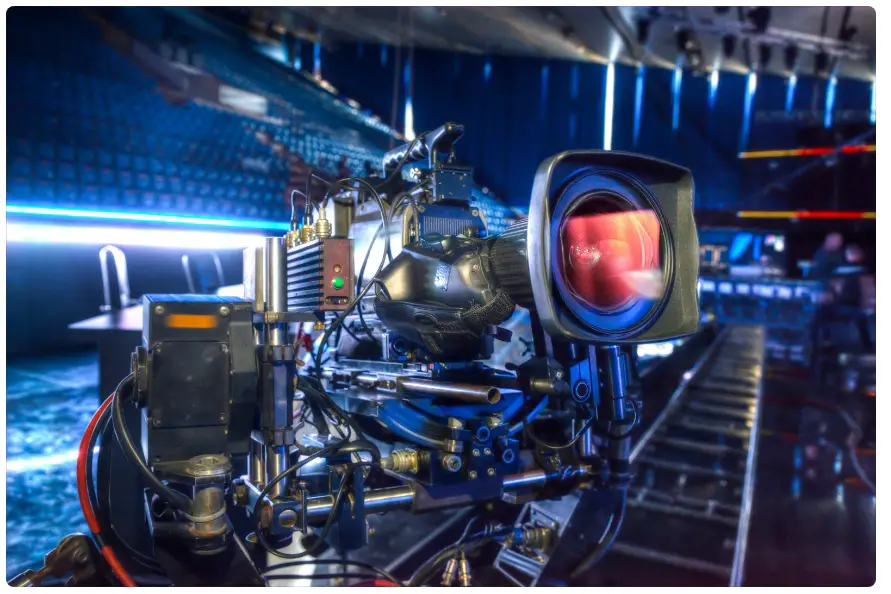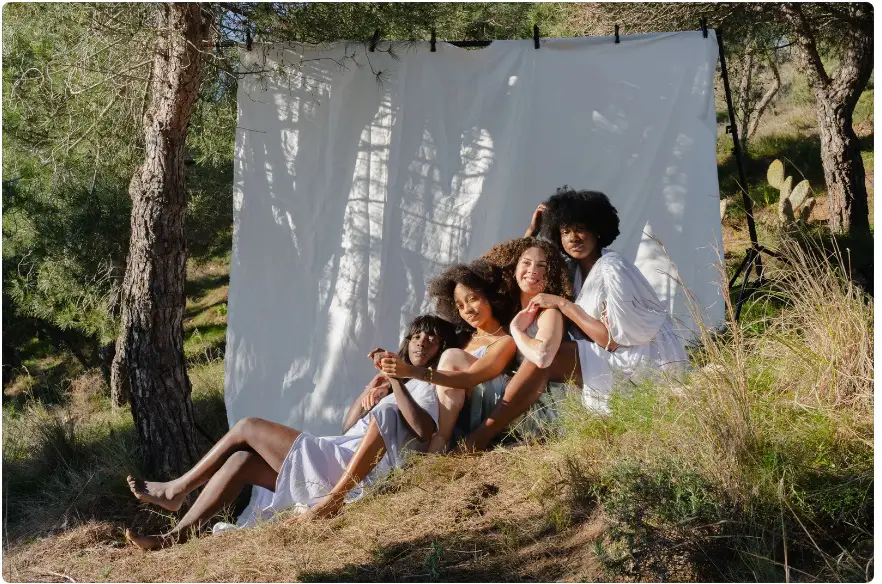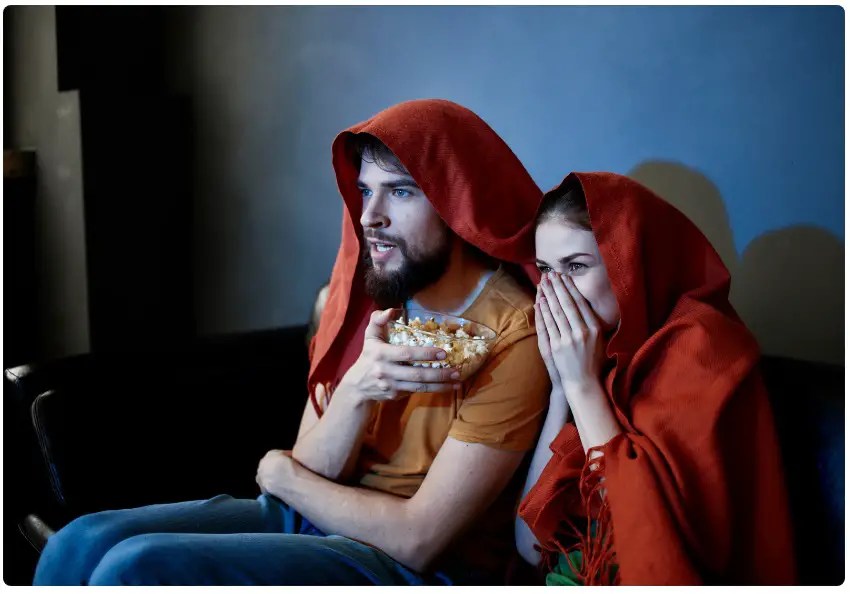Reality shows have become a popular form of entertainment, captivating audiences with their unscripted drama and unpredictable moments. Behind the scenes, there is a team of professionals working tirelessly to ensure that everything runs smoothly, and one key role in this team is that of a gaffer. In the context of reality shows, the role of a gaffer takes on a unique significance compared to other genres.
A gaffer is responsible for the lighting setup and execution on a film set, ensuring that the right mood and atmosphere are created to enhance the storytelling. While lighting is important in all types of productions, it plays a crucial role in reality shows where capturing authentic moments is paramount. The gaffer collaborates closely with the director of photography and the production team to understand the desired aesthetic and visual style of the show. They work with a variety of lighting equipment, such as spotlights, diffusers, and gels, to create the desired effects. Additionally, they must be able to adapt quickly to changing environments and lighting conditions, as reality shows often take place in different locations and situations.
The role of a gaffer in reality shows requires not only technical expertise but also the ability to work under pressure and think creatively. They must be able to anticipate the lighting needs of each scene and make adjustments on the fly to ensure that the footage is well-lit and visually appealing. In the following sections, we will delve deeper into the specific responsibilities, skills, and career path of a gaffer in the context of reality shows. By understanding the importance of this role, aspiring gaffers can gain valuable insights into what it takes to succeed in this exciting industry.
Contents
What Is a Gaffer?
A gaffer is a key member of the production team in reality shows, responsible for the lighting setup and execution on a film set. The term “gaffer” originated from the early days of the film industry when the head electrician would carry a “gaff” or long pole to position lights. Today, the gaffer’s role has evolved to encompass much more than just handling lights. In the context of reality shows, the role of a gaffer is of utmost importance.
They work closely with the director of photography and the production team to understand the desired aesthetic and visual style of the show. The gaffer uses their technical expertise to create the right mood and atmosphere through lighting, enhancing the storytelling and capturing authentic moments. The gaffer’s responsibilities include selecting and positioning lighting equipment, such as spotlights, diffusers, and gels, to achieve the desired effects.
They must be able to adapt quickly to changing environments and lighting conditions, as reality shows often take place in different locations and situations. A skilled gaffer possesses a deep understanding of lighting techniques, color theory, and the ability to work under pressure.
They must anticipate the lighting needs of each scene and make adjustments on the fly to ensure that the footage is well-lit and visually appealing. In summary, a gaffer is a crucial member of the production team in reality shows, responsible for creating the right lighting atmosphere to enhance the storytelling and capture authentic moments. Their technical expertise and creative thinking play a vital role in the success of a reality show.
Roles and Responsibilities: What Does a Gaffer Do?
A gaffer plays a crucial role in the production of a reality show, taking on a variety of tasks and responsibilities to ensure the lighting setup is executed flawlessly. One of the main duties of a gaffer is to collaborate closely with the director of photography and the production team to understand the desired aesthetic and visual style of the show.
This involves discussing the overall vision and mood of each scene and determining the lighting requirements to achieve the desired effects. Once the lighting plan is established, the gaffer is responsible for selecting and positioning the appropriate lighting equipment. This includes setting up spotlights, diffusers, gels, and other tools to create the desired lighting effects. The gaffer must have a deep understanding of lighting techniques and color theory to effectively enhance the storytelling and capture authentic moments. During the production, the gaffer must be able to adapt quickly to changing environments and lighting conditions.
Reality shows often take place in various locations and situations, requiring the gaffer to make adjustments on the fly to ensure each scene is well-lit and visually appealing. In summary, the roles and responsibilities of a gaffer in a reality show encompass collaborating with the production team, understanding the desired aesthetic, selecting and positioning lighting equipment, and adapting to changing environments. Their expertise in lighting techniques and ability to enhance storytelling through lighting are essential for the success of a reality show.
Skills and Traits: What Makes a Good Gaffer?
Successful gaffers possess a unique set of skills and characteristics that are essential for their role in reality television shows. Firstly, technical expertise in lighting techniques is crucial. A good gaffer understands how to manipulate light to create the desired mood and atmosphere for each scene. They have a deep knowledge of different lighting equipment and can effectively use tools such as spotlights, diffusers, and gels to achieve the desired effects.
Attention to detail is another important trait. Gaffers must be meticulous in their work, ensuring that every light is positioned correctly and every shadow is controlled. They have a keen eye for composition and can make quick adjustments to enhance the visual appeal of a shot. Problem-solving skills are also vital. Reality shows often present unpredictable challenges, such as shooting in unconventional locations or dealing with limited resources.
A good gaffer can think on their feet and find creative solutions to overcome these obstacles. Communication and collaboration skills are essential for working effectively with the director of photography, production team, and other crew members. Gaffers must be able to clearly communicate their ideas and understand the vision of the show. They must also be able to work well under pressure and maintain a positive attitude, as the production schedule can be demanding. In summary, a good gaffer possesses technical expertise in lighting, attention to detail, problem-solving skills, effective communication, and collaboration abilities. These skills and traits are what make them an invaluable asset to the production of reality television shows.
The Team Dynamics: Who Does a Gaffer Work With?
A gaffer plays a crucial role in the production of reality television shows, and their work involves close collaboration with various crew members. One of the key relationships a gaffer has is with the director of photography (DP). The gaffer works closely with the DP to understand their vision for the show and translate it into the lighting setup.
They discuss the desired mood and atmosphere for each scene, and the gaffer uses their technical expertise to bring that vision to life. Additionally, the gaffer works closely with the grip department. While the gaffer focuses on lighting, the grip department is responsible for the physical setup and movement of equipment on set. The gaffer and grips work together to ensure that lighting fixtures are securely mounted and positioned correctly. They collaborate to create the desired lighting effects and manage any challenges that may arise during production.
Furthermore, the gaffer interacts with other members of the production team, such as the production designer and art director. These individuals contribute to the overall aesthetic of the show, and the gaffer collaborates with them to ensure that the lighting complements the set design and enhances the visual appeal of each scene. Effective communication and teamwork are essential in these collaborations. The gaffer must be able to clearly communicate their ideas and work harmoniously with the rest of the crew to achieve the desired results.
By fostering strong relationships and collaborating effectively, the gaffer contributes to the overall success of the production and helps create a visually captivating reality television show.
Grip vs. Gaffer: Understanding the Differences
In the world of reality television production, it’s important to understand the distinctions between the roles of a grip and a gaffer. While both positions are crucial to the success of a show, they have separate responsibilities and functions. A grip is responsible for the physical setup and movement of equipment on the film set. They work closely with the gaffer to ensure that lighting fixtures are securely mounted and positioned correctly.
Grips handle the rigging and operation of equipment such as cranes, dollies, and camera mounts. They also assist with the setup of props and other elements on set. Their expertise lies in creating a safe and efficient working environment for the crew. On the other hand, a gaffer focuses specifically on lighting. They work closely with the director of photography to understand the desired mood and atmosphere for each scene. The gaffer then uses their technical expertise to translate that vision into the lighting setup. They select and position lighting fixtures, adjust intensity and color, and create lighting effects to enhance the visual appeal of the show.
The gaffer’s role is crucial in setting the tone and ambiance of each scene. While both the grip and gaffer collaborate closely, their areas of expertise and responsibilities differ. The grip handles the physical aspects of equipment setup, while the gaffer focuses on lighting design and execution. Understanding these differences is essential for aspiring professionals in the industry, as it allows them to appreciate the unique contributions of each role and work effectively as part of a cohesive team.
The Path Forward: How to Become a Gaffer
Becoming a gaffer in the reality television industry requires a combination of education, experience, and dedication. If you’re passionate about lighting and have a keen eye for detail, here is a step-by-step guide to help you pursue a successful career as a gaffer.
- 1. Education: While there are no specific educational requirements to become a gaffer, obtaining a degree or certification in film production, cinematography, or lighting design can provide a solid foundation. These programs offer courses that cover lighting techniques, equipment operation, and set safety.
- 2. Gain Experience: Building practical experience is crucial in this field. Start by working as a lighting technician or assistant on smaller productions, such as short films or student projects. This will allow you to learn from experienced professionals and familiarize yourself with different lighting setups and equipment.
- 3. Network: Networking is essential in the entertainment industry. Attend industry events, join professional organizations, and connect with other professionals in the field. Building relationships can lead to job opportunities and mentorship.
- 4. Specialize: As you gain experience, consider specializing in a specific area of lighting, such as outdoor or studio lighting. Developing expertise in a niche can make you more valuable and increase your chances of landing higher-profile projects.
- 5. Continual Learning: Stay updated with the latest lighting techniques, equipment, and industry trends. Attend workshops, seminars, and online courses to enhance your skills and knowledge.
- 6. Build a Portfolio: Create a portfolio showcasing your best lighting work. Include before-and-after photos, lighting diagrams, and any awards or recognition you have received. A strong portfolio will impress potential employers and clients.
By following these steps, you can pave your way to a successful career as a gaffer in the reality television industry. Remember, perseverance and a passion for lighting are key to achieving your goals.
Educational Path: What Are the Requirements?
While there are no specific educational requirements to become a gaffer in the reality television industry, obtaining a degree or certification in film production, cinematography, or lighting design can provide a solid foundation for aspiring gaffers. These educational programs offer courses that cover lighting techniques, equipment operation, and set safety, which are essential skills for a gaffer. A degree or certification in film production can provide a comprehensive understanding of the entire production process, including lighting.
Courses in cinematography focus on the technical aspects of lighting and camera operation, while lighting design programs delve deeper into the artistic and creative aspects of lighting. Additionally, there are specialized courses and workshops available that specifically focus on lighting for film and television. These courses often provide hands-on training with industry-standard lighting equipment and techniques. While formal education can be beneficial, practical experience is equally important in this field. Working as a lighting technician or assistant on smaller productions, such as short films or student projects, allows aspiring gaffers to learn from experienced professionals and gain hands-on experience with different lighting setups and equipment. Ultimately, a combination of education and practical experience will provide aspiring gaffers with the necessary skills and knowledge to succeed in the reality television industry.
Earning Potential: What Is a Gaffer’s Average Salary?
When it comes to the earning potential of gaffers in the reality show industry, the salary can vary depending on several factors. These factors include the size and budget of the production, the gaffer’s level of experience, and the location of the shoot. On average, gaffers in the reality show industry can expect to earn between $40,000 and $80,000 per year. However, it’s important to note that this range can fluctuate significantly. For smaller productions or entry-level gaffers, the salary may be on the lower end of the spectrum. As gaffers gain more experience and work on larger productions, their earning potential can increase. In addition to the base salary, gaffers may also receive additional compensation for working long hours, weekends, or on holidays.
They may also receive overtime pay for exceeding a certain number of hours worked in a week. It’s worth mentioning that gaffers who have established themselves as top professionals in the industry and have worked on high-profile reality shows can command higher salaries. These gaffers may also have the opportunity to negotiate their rates based on their reputation and demand. Overall, while the salary of a gaffer in the reality show industry can vary, it is a rewarding career path for those passionate about lighting and production. With experience and expertise, gaffers can continue to grow their earning potential and make a significant impact in the industry.
Conclusion: The Impact and Importance of Gaffers in Reality Shows
The gaffer role plays a crucial role in the success of reality shows, and their impact cannot be underestimated. Gaffers are responsible for creating the perfect lighting setup that sets the mood, enhances the visuals, and brings the story to life. They work closely with the director of photography and the production team to ensure that every scene is visually appealing and captures the essence of the show. The importance of gaffers in reality shows lies in their ability to create the desired atmosphere and ambiance. Whether it’s a tense elimination round or a heartwarming reunion, the lighting sets the tone and evokes the desired emotions from the audience. Gaffers use their expertise in lighting techniques and equipment to create the perfect balance of light and shadow, highlighting the key moments and characters.
By pursuing a career as a gaffer in reality shows, individuals have the opportunity to make a significant impact on the overall production. They have the power to transform a simple set into a visually stunning and captivating environment. The work of gaffers is often underappreciated, but their contribution is invaluable in creating a memorable viewing experience for the audience. If you have a passion for lighting, a keen eye for detail, and the ability to work under pressure, becoming a gaffer in reality shows can be a rewarding career path. It offers the opportunity to work on exciting projects, collaborate with talented professionals, and leave a lasting impact on the audience. So, if you’re ready to take on the challenge and make your mark in the industry, consider pursuing a career as a gaffer in reality shows.




